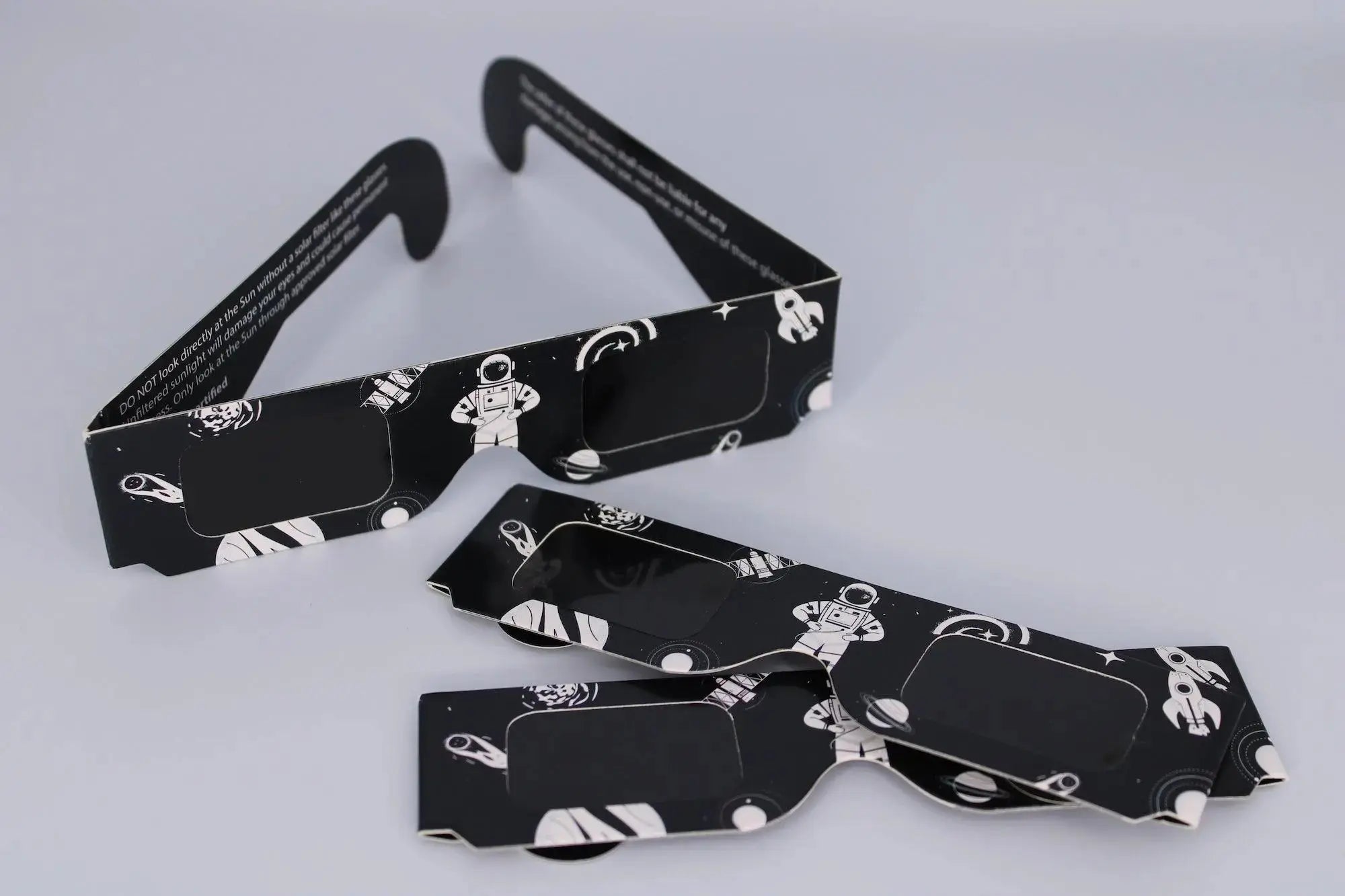The astronomical spectacle of a solar eclipse is one of nature’s most awe-inspiring events. During an eclipse, the Moon passes between the Earth and the Sun, temporarily blocking the Sun's light.
Observing a solar eclipse is a remarkable experience, but it's important to consider the safety measures needed to protect your eyesight. In this article, we’ll explore the scientific reasons behind the need for solar eclipse glasses.
The Dangers of Sun Gazing
Observing the Sun without adequate eye protection, even for a short duration, can cause permanent damage to the retina, the light-sensitive tissue at the back of the eye. This condition, known as solar retinopathy, can lead to loss of central vision and the creation of blind spots. The risk of retinal damage increases significantly during a solar eclipse due to the ‘pupil dilation effect’.
When the Sun is obscured, the pupil naturally dilates to adjust to the lower light levels, allowing more harmful rays to enter the eye if you look at the Sun.
What Makes Solar Eclipse Glasses Essential?
Solar eclipse glasses are specifically designed to protect your eyes from harmful solar radiation during an eclipse. These glasses are made with a special black polymer material that filters out 100% of harmful ultraviolet and infrared rays and all but 0.003% of visible light.
The American Astronomical Society (AAS) and NASA advocate the use of solar viewers that meet the ISO 12312-2 international standard for safely observing the Sun. It’s important to note that regular sunglasses, even very dark ones, or homemade filters are not safe for looking at the Sun as they do not provide sufficient protection against ultraviolet (UV) and infrared (IR) radiation.
Types of Solar Eclipses and Viewing Requirements
There are three main types of solar eclipses: total, partial, and annular. During a total solar eclipse, it is safe to look at the Sun only during the brief period of totality when the Moon completely covers the Sun.
However, at all other times, and during partial and annular eclipses, it is crucial to wear eclipse glasses to protect your eyes.
Tips for Safe Solar Eclipse Observation
- Always inspect your solar eclipse glasses before use; if scratched or damaged, do not use them.
- Always supervise children using eclipse glasses.
- Do not use solar eclipse glasses in conjunction with binoculars, telescopes, or cameras unless they have a proper solar filter.
- If you wear glasses, keep them on and place your eclipse glasses over them, or use handheld viewers known as solar viewers.
- Look away from the Sun before putting on or removing your eclipse glasses.
- If you’re within the path of totality during a total solar eclipse, only remove your glasses when the Moon completely covers the Sun.
In conclusion, using solar eclipse glasses is essential for safely observing a solar eclipse and protecting your eyes from harmful solar radiation. Investing in ISO certified eclipse glasses is a small step to take for ensuring that you can enjoy the splendor of a solar eclipse without risking your eyesight.



Share:
How to Capture Beautiful Eclipse Photos and Learn if Eclipse Glasses Can Be Used as Solar Filters
How to Host an Eclipse Viewing Party, Don't Forget Your Eclipse Glasses!